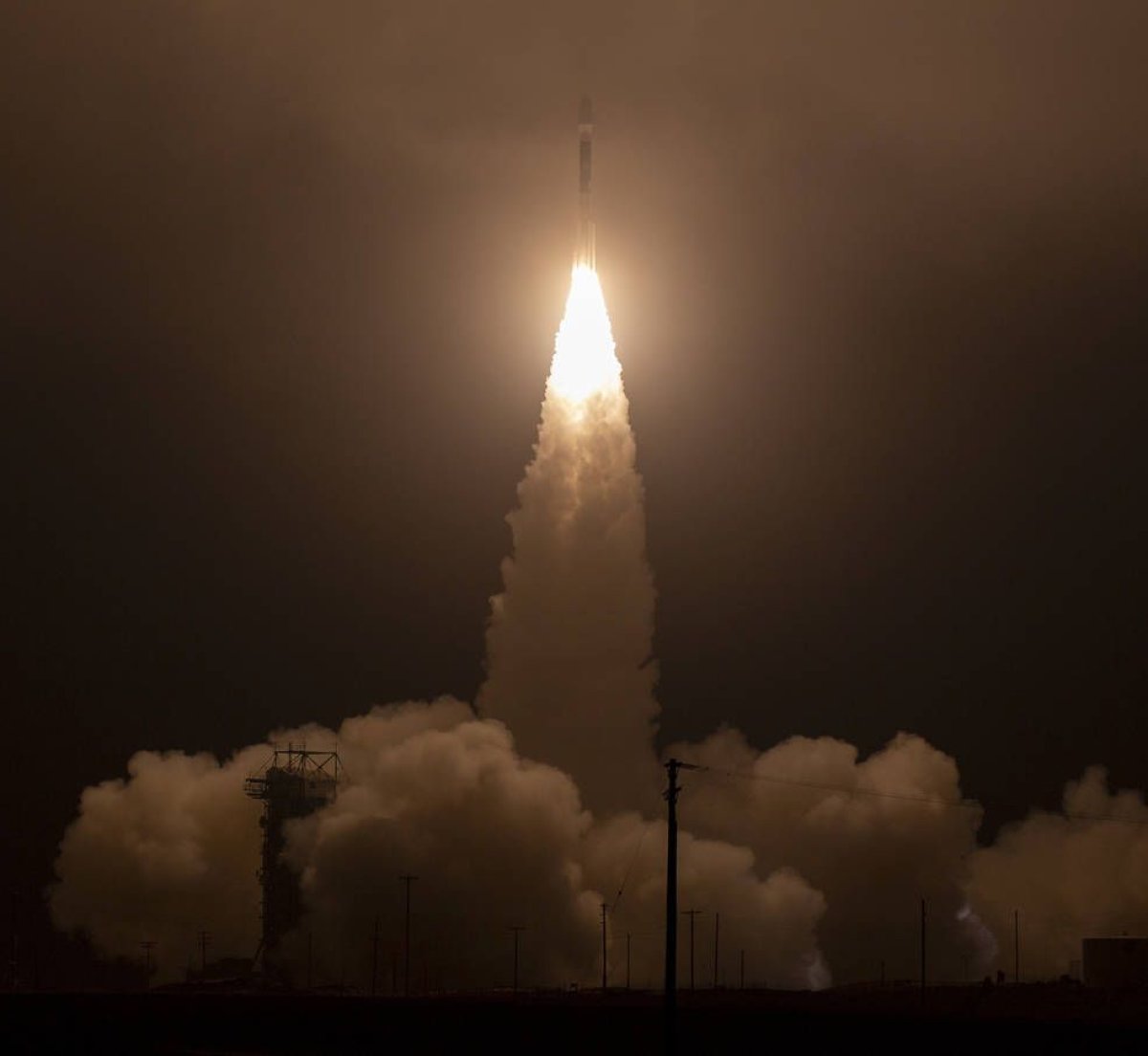NASA has successfully launched a new satellite to monitor and measure Earth's frozen poles. The ICESat-2 satellite will orbit the planet from an altitude of 290 miles, gathering data to estimate the height changes of the Greenland and Antarctic ice sheets.
The instrument on board, the Advanced Topographic Laser Altimeter System (ATLAS), will be able to monitor shifts in the ice to within four millimeters—allowing scientists to get an unprecedented view of this remote and harsh environment.
"With this mission we continue humankind's exploration of the remote polar regions of our planet and advance our understanding of how ongoing changes of Earth's ice cover at the poles and elsewhere will affect lives around the world, now and in the future," Thomas Zurbuchen, associate administrator of NASA's Science Mission Directorate, said in a statement.
The satellite launched from California's Vandenberg Air Force Base and after 75 minutes started transmitting signals back to NASA. It is currently traveling at a speed of 17,069 miles per hour, orbiting the globe from pole to pole.
ICESat-2 will be focusing on the cryosphere—the areas of the planet covered in ice. This is a key focus of NASA's Earth science research, with researchers looking to find out how these regions are changing as global temperatures increase.
By understanding the changes to the polar ice caps, scientists will be able to better forecast future sea level rise based on melting rates. It will also help them understand how sea ice loss is affecting the ocean and atmosphere, as well as getting a grip on the mechanisms causing the ice to decrease.
As well as looking at the cryosphere, the satellite will also measure other parts of Earth, including the temperate and tropical regions.

"For us scientists the most anticipated part of the mission starts when we switch on the laser and get our first data," said Thorsten Markus, ICESat-2 project scientist at NASA's Goddard Space Flight Center. "We are really looking forward to making those data available to the science community as quickly as possible so we can begin to explore what ICESat-2 can tell us about our complex home planet."
Measurements from ICESat-2 will be available from the National Snow and Ice Data Center.
In an email to Newsweek, a spokesperson for the ICESat-2 Project said the raw data is already starting to come in. "The data will provide height information at a resolution and coverage not seen before—on a global scale, including the cryosphere," they said. "The focus on sea ice, freeboard and ice sheets will provide the best repeatable data to date, with each orbit repeated every 91 days—so users will be able to monitor a given location once each season."
The ICESat-2 million is scheduled to last for three years. However, the future of NASA's Earth monitoring activities are currently in doubt as a result of proposed budget cuts by the Trump administration. In May, Science magazine announced the space agency's Carbon Monitoring System (CMS), a program to track the flow of carbon dioxide around the globe, had been axed.
According to space.com, five other Earth science missions were also targeted and the total budget for such research was reduced from $1.9bn in 2017 to $1.78bn in 2019.
"The changes in the arctic and antarctic are happening faster and to a greater extent than much of the rest of the planet," the spokesperson added. "The cryosphere is a difficult place to visit, measure and monitor on a constant basis. Satellite coverage provides a means to accomplish this in a way that no other mechanism can. Just as satellite-based measurements have revolutionized other areas of environmental research, ICESat-2 and future missions will provide a wealth of new measurements for use in monitoring current and trending events."
This article has been updated to include quotes from a ICESat-2 spokesperson.
Uncommon Knowledge
Newsweek is committed to challenging conventional wisdom and finding connections in the search for common ground.
Newsweek is committed to challenging conventional wisdom and finding connections in the search for common ground.
About the writer
Hannah Osborne is Nesweek's Science Editor, based in London, UK. Hannah joined Newsweek in 2017 from IBTimes UK. She is ... Read more
To read how Newsweek uses AI as a newsroom tool, Click here.








